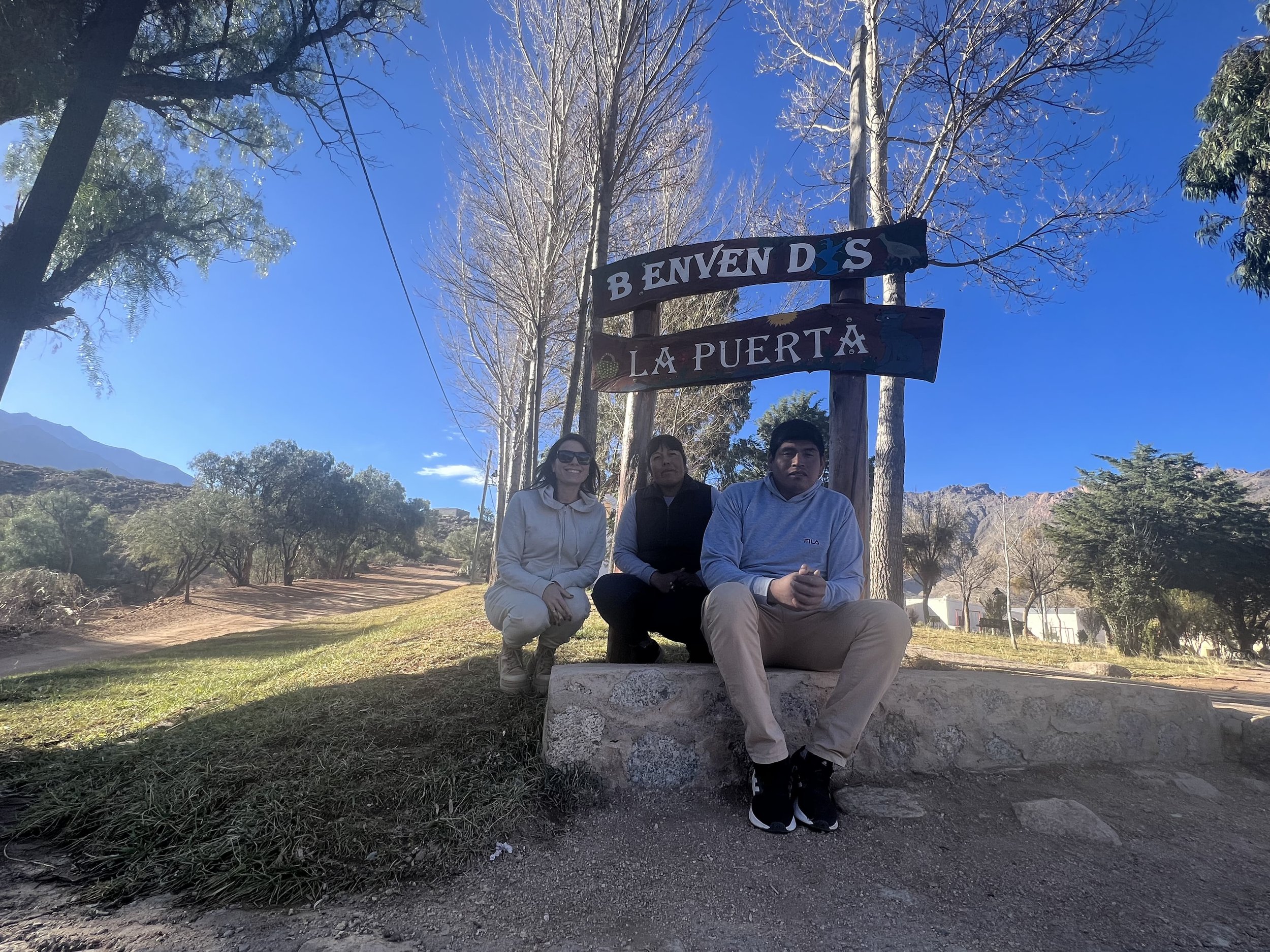Luracatao
Its landscape and its peopleWe were determined to get to know the remote locality of the department of Molinos that used to be the giant estancia of Luracatao.
The valley is located at 2700 meters above sea level. For that reason, the first long weekend, just as winter was beginning, we arrived at Seclantás Adentro to rest at Finca La Encantada and get ready for the next long day, to fulfill the objective of visiting Luracatao, which in cacán means high town.
To get to La Puerta, from Seclantás, you have to travel about forty kilometers of gravel road, a winding road of ups and downs that crosses majestic landscapes. Despite its beauty, the stretch is equally exhausting, as it can take an hour and a half for those who do not frequent it and must negotiate speed bumps, cliffs and narrow bridges.
Leaving the farm, we made a first stop in the green valley of Seclantás Adentro.
From there we started on this gravel road, along Provincial Route 56, with slopes and no telephone signal, which led us first to the Brealito Lagoon. Although we had already visited it, it is on the way to Luracatao and we had been invited to the patronal feast of San Antonio de Padua. It was impossible to miss this celebration.
The small community of the lagoon was celebrating that Saturday morning and the preparations predicted a day of entertainment for everyone.
That is how we met Alan, a handsome gaucho from Fortín de Brealito. The nice young man did not hesitate to tell us about his attire and that of his horse. Then the mass in honor of the patron saint began, so we witnessed the ritual, but we could not stay long because an arduous and slow road awaited us to Cabrería. This is the small place where the unknown spring of thermal water is located.
Hyper-mineralized water gushes out of the mountain at high temperatures and there is still an old pool to bathe and enjoy its benefits, while the Percayo River flows below, with its cold waters sliding among the rocks.
Reaching the natural spring takes about twenty-five minutes of authentic trekking, between pebbles and sand, crossing the river, which includes at times a path of height not suitable for those who suffer from vertigo, which -in other times- was the way of the muleteers to Chile.
We were guided by Jovito Morales, a town councilman, who was willing to escort us during our visit to Luracatao. The contact was made by Mauricio Abán, the active Seclantás mayor, an enthusiastic young man, with a firm idea of progress for his town and its people.
Jovito, proud of his land, helpful and attentive, answered our questions with an unusual pause. This calmness was worthy of admiration. An apprenticeship in itself. He was accompanied by Rocío Yapura and Daniela Morales, with whom -during the walk- we exchanged stories and tales about our own lives. They were also interested in hearing our opinion about tourism. They know that their town is getting on the radar of travelers. Everything there is a little at a time, so at that moment we hope that the impact of visitors will be respectful of such a touching environment.
They are very remote villages that are accessed by inhospitable trails where you only cross a couple of vehicles and perhaps some donkeys.
After that trekking enjoying the majestic landscape, Rocio said goodbye, and we were guided by Jovito to La Puerta, the main place in the area where we shared lunch in the dining room of Loco Wanabara.
It was a typical lunch in the remote places of the north, we ate what there was or what was left, accompanied with a cold soda, well sweetened, in a familiar and warm atmosphere, where kindness makes up for any lack. In this case it was an excellent milanesa with tasty french fries. A nice chat to get to know each other and to understand -a little- the reality of La Puerta, where the bus to Seclantás runs only three days a week, where a dentist visits every once in a while and the day of celebration is the day of salary and retirement payments, when the mail truck arrives to the town's square and summons hundreds of locals, who are tempted by the offer of the street vendors who are getting ready to make their big day of the month.
From there we went to Mrs. Nicolasa Reales' house, one of the town's weavers, an expert in braiding ropes. She passed on her knowledge and technique to her son Gabriel Fabian, another great artist of Luracatao, who uses his loom to produce textiles that are sold everywhere. He was not there, he was playing soccer in the local championship, but Nicolasa and Trini received us with a lot of charm and sparkle. It was getting late in the afternoon, and the cold was beginning to be felt, so we were even more surprised by our hostess's light clothing and her sandals without socks. At our inquiry, she laughingly declared that it was not cold, that winter had not arrived yet, while we were wrapped up to our noses.
After getting one of her ropes, the best souvenir of that unforgettable day, we went to the town square, with its beautiful church and green grass, and there we said goodbye to our hosts. And so, grateful for having met the charming Cateños, we left on our way back to spend the cold June night in Sala de Payogasta, celebrating the unforgettable opportunity to discover Luracatao and its landscapes.




















